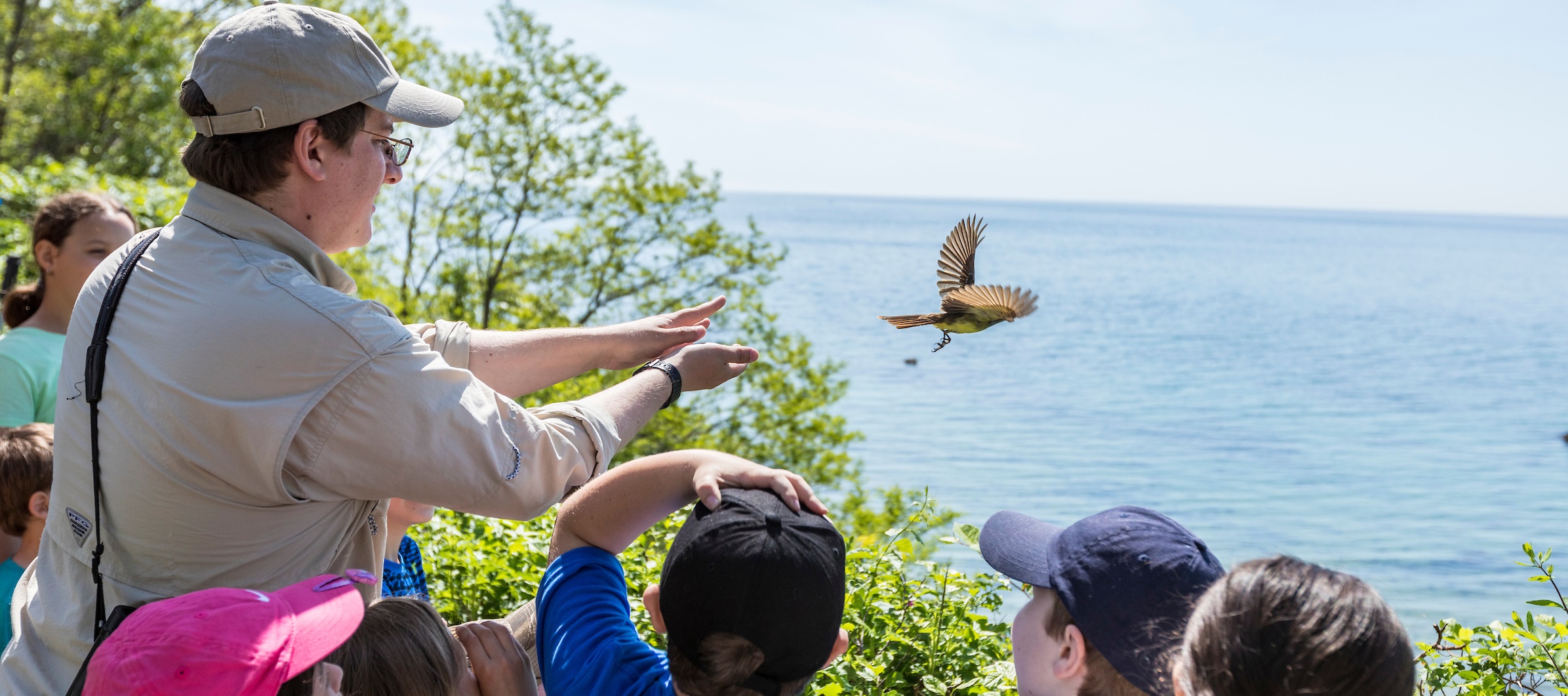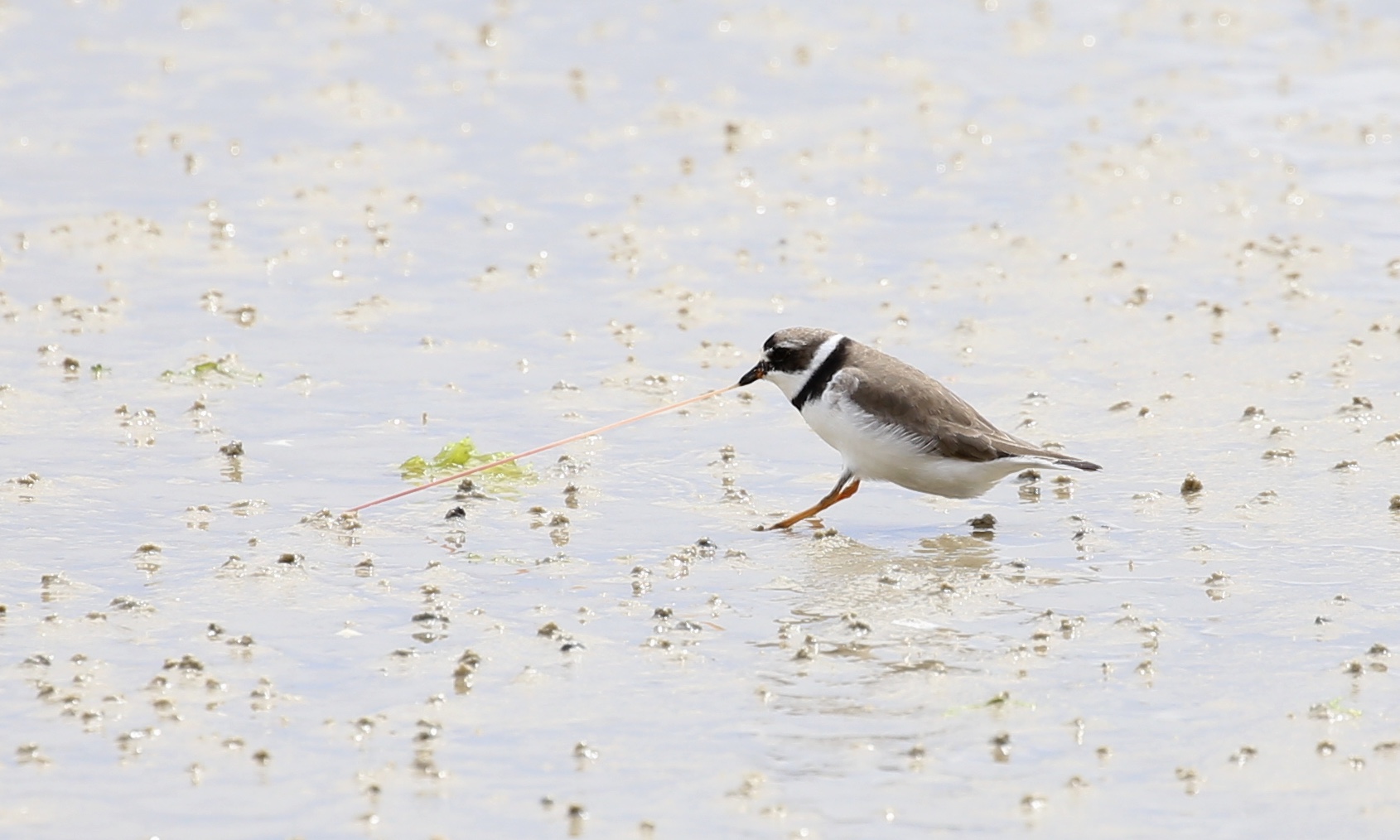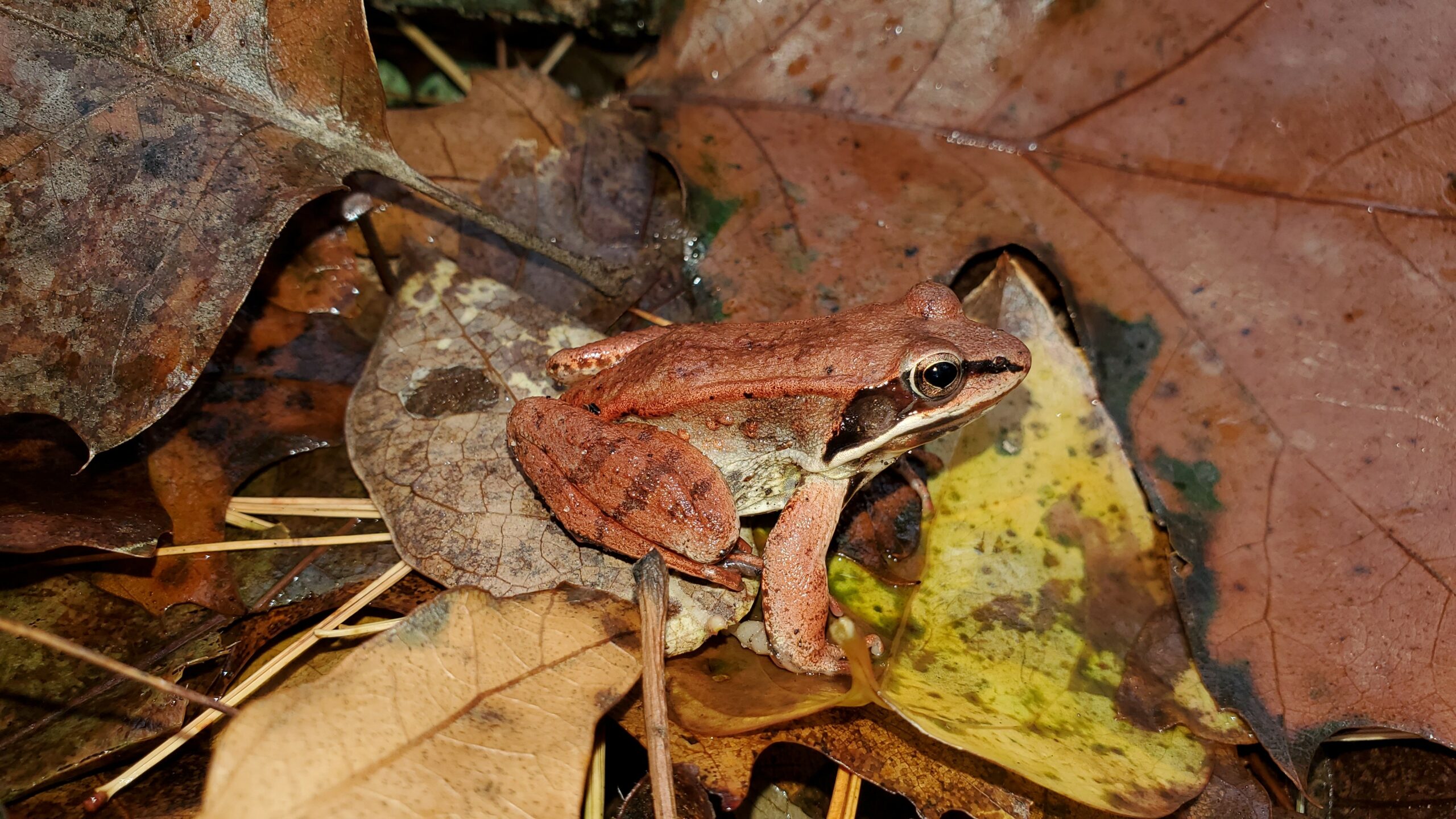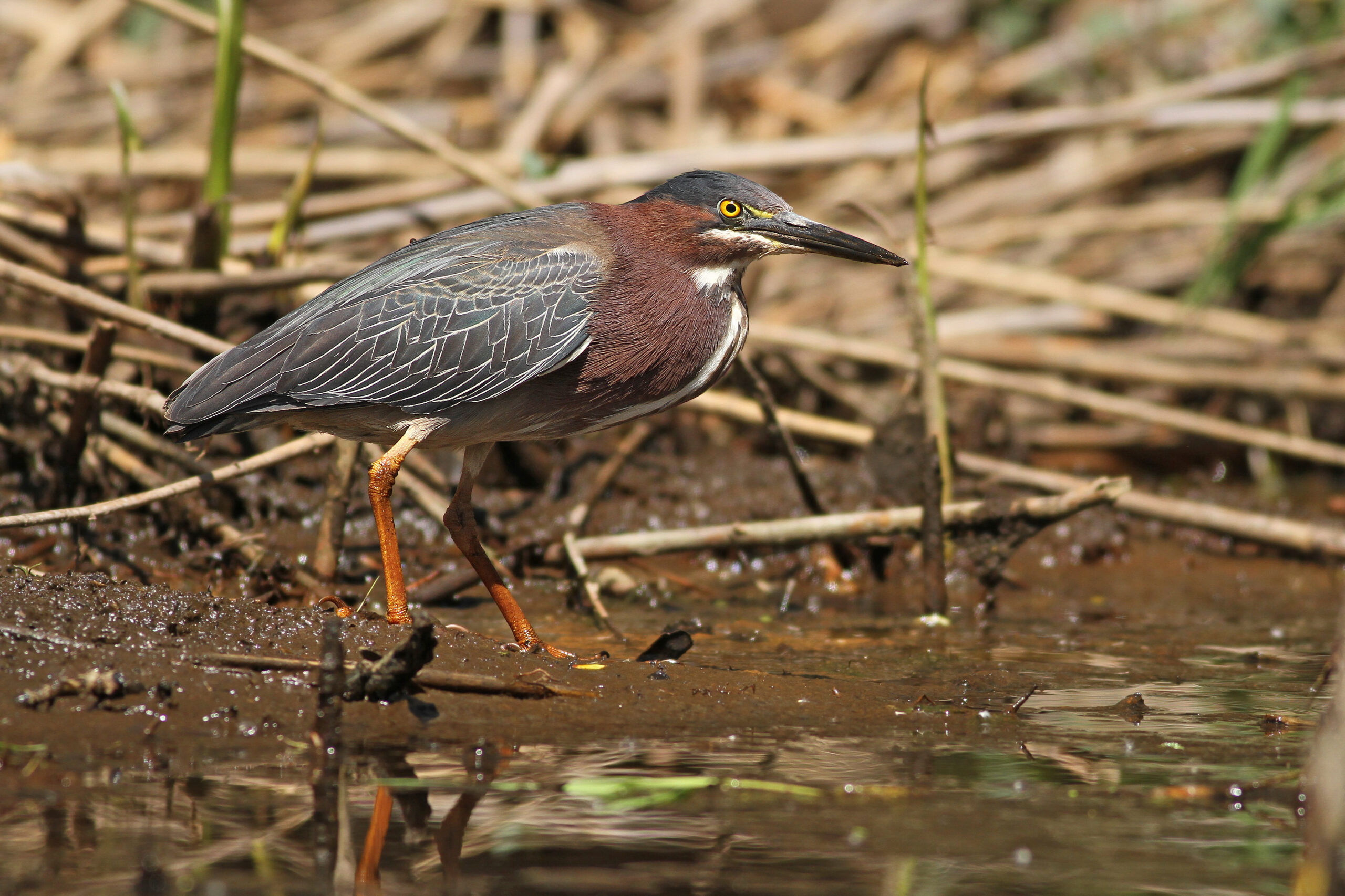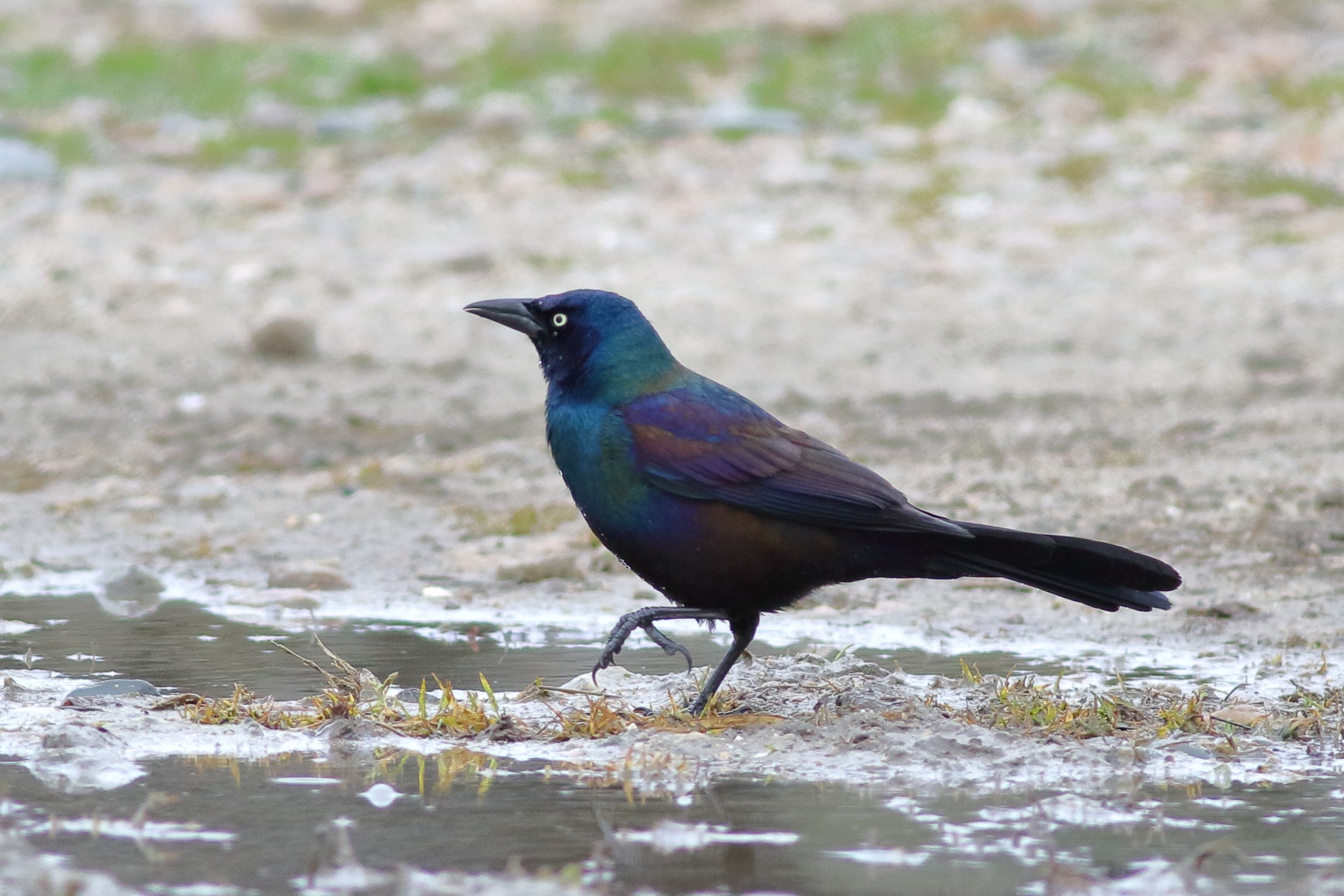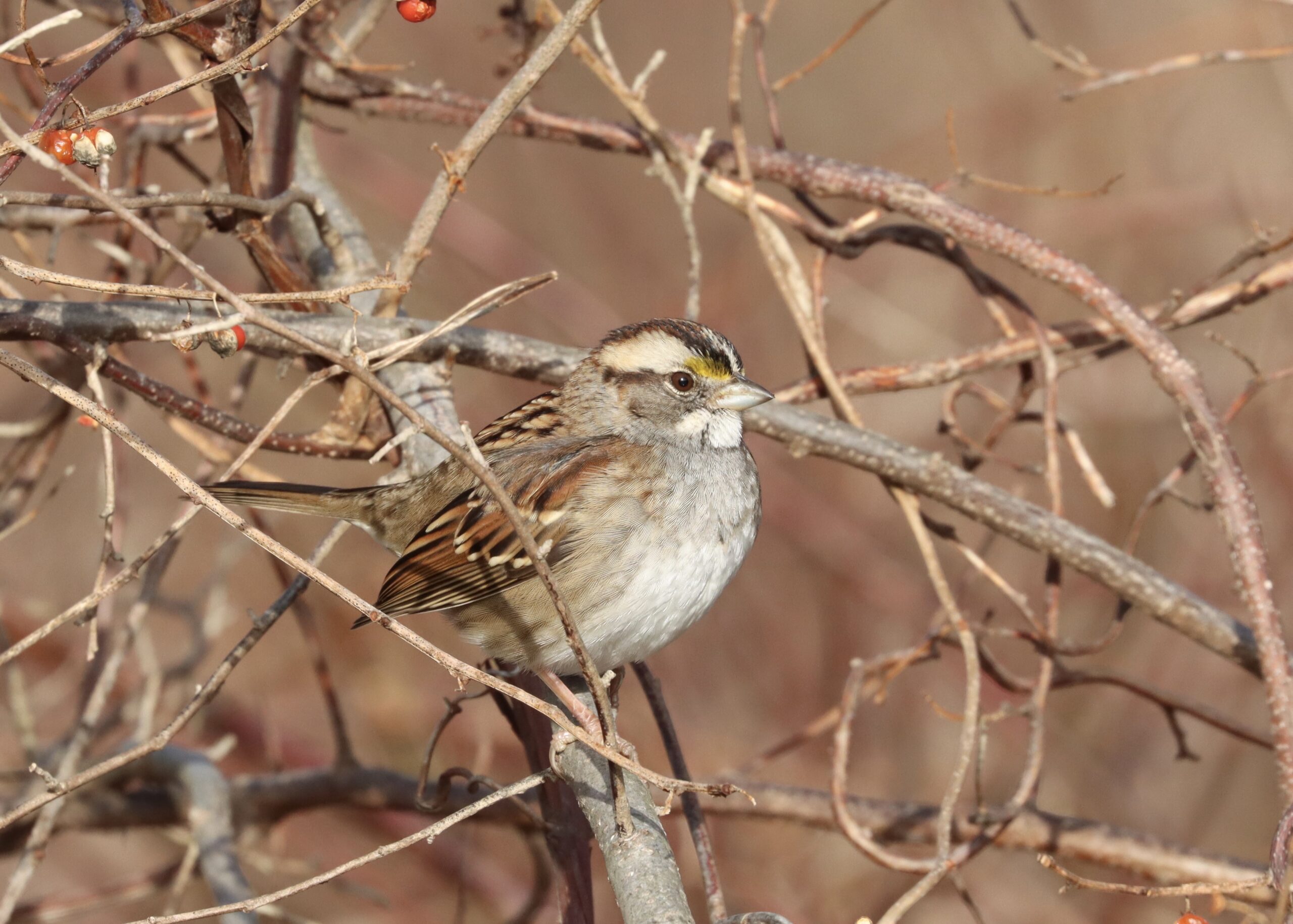This summer, we will reveal our new interpretive nature trail at our Plymouth, Massachusetts campus. The trail and learning stations are under construction, but we want to introduce you to some of the landscapes, habitats, and species you’ll see when you visit.
Manomet’s Bluff
Manomet’s Plymouth campus shares a small stretch of coastline with Cape Cod Bay, a thriving ecosystem brimming with marine life. The bluff at Manomet’s headquarters that overlooks Cape Cod Bay is a terminal (or end) moraine, the point of furthest eastward advance of a glacial lobe of the Laurentide Ice Sheet, which reached its maximum advance about 23,000 years ago near Martha’s Vineyard and Nantucket. The large rocks along the shoreline, known as “glacial erratics,” were deposited by the moving glaciers!
You can find much more than just rocks off the bluff; fish, birds, and a variety of marine mammals, including two species of seal, can be spotted from Manomet’s headquarters, too! Whether you’ve seen them hauled out on the rocks or heard them growling both day and night, perhaps no animal is more conspicuous along Manomet’s shoreline than the seal. Simply put, the Harbor Seal is the “winter” seal, and the Gray Seal is the “summer” seal, but how do you tell them apart? The Gray Seal can be distinguished from the Harbor Seal by its larger size and long, horse-like snout. Both species feed on fish, crustaceans (crabs, lobsters), and cephalopods (squid, octopi). And both are a favorite snack of the Great White Shark.
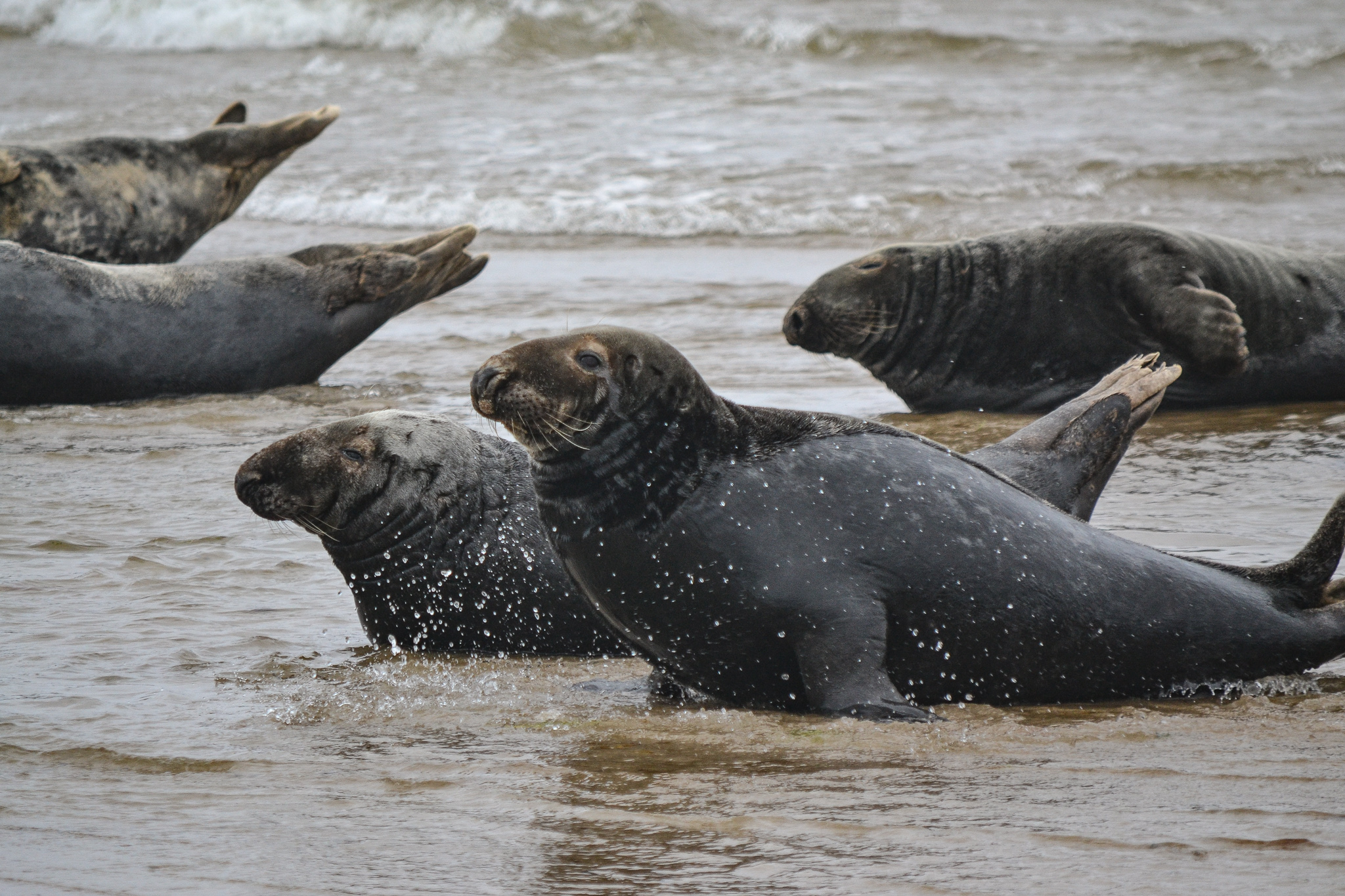
Manomet’s headquarters and banding lab also sit in the middle of an avian superhighway. Many birds follow coastlines on their annual migrations, using the shore as a landmark to guide their journey. During these migrations, thousands of ducks, loons, and other seabirds migrate past Manomet Point. Meanwhile, landbirds, including diurnal migrants such as jays and swallows, and nocturnal migrants, like warblers and thrushes, migrate overhead.





 Back to all
Back to all